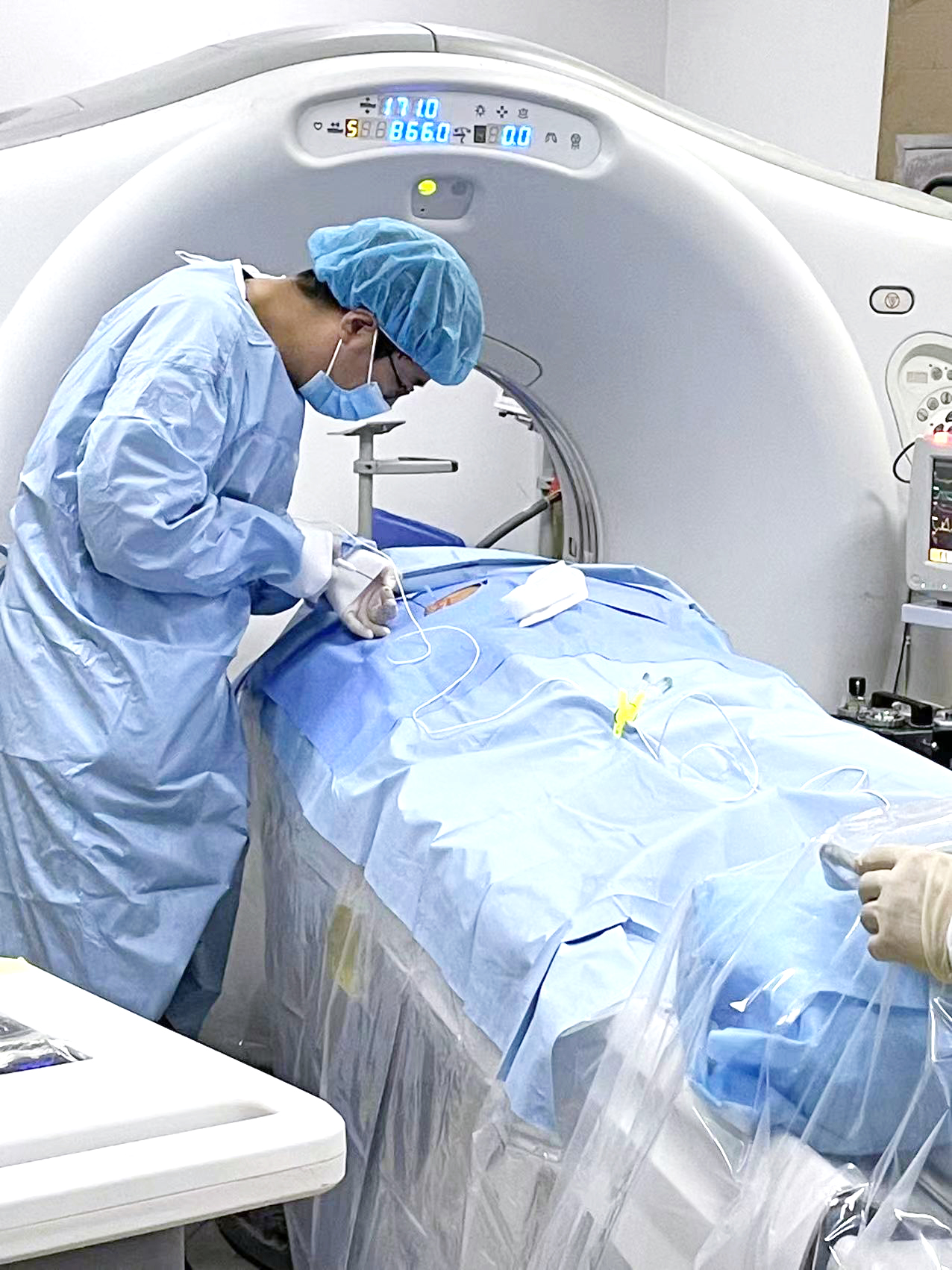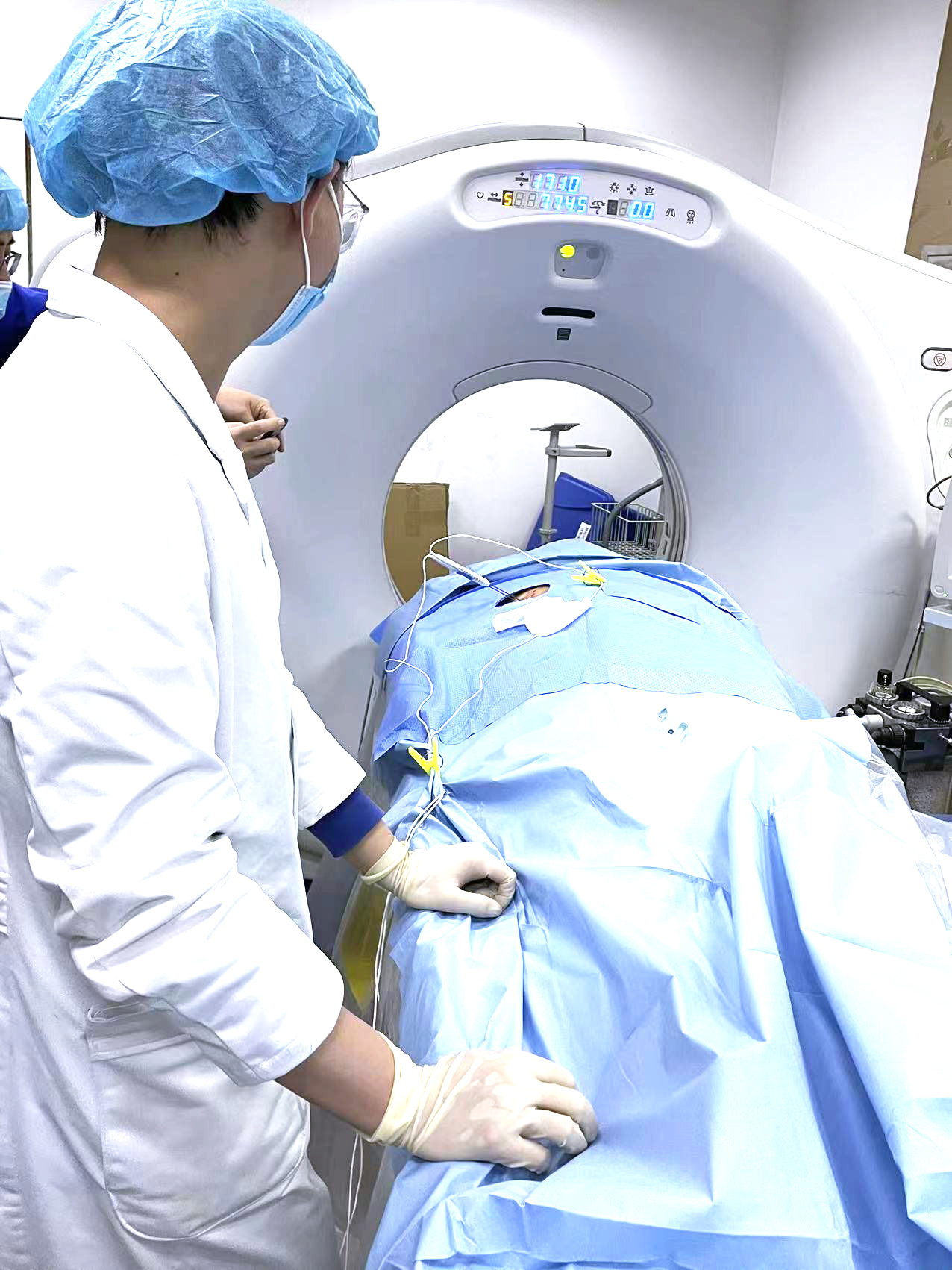

On December 5th, 2022, Dr. Fu Dianxun and his team from the Department of Radiology at Tianjin Medical University General Hospital successfully performed a liver malignant solid tumor ablation surgery using the cutting-edge Nanoknife tumor ablation technology and CT guidance for a patient with liver metastasis after pancreatic cancer resection. The surgery was performed using the High Voltage Steep Pulse Minimally Invasive Therapeutic System independently developed and produced by Shanghai Yuanshan Medical Technology Co., Ltd. (hereinafter referred to as "Alpmed").
The patient is a 62-year-old female who experienced limb weakness and body pain for a period of time after surgery for pancreatic cancer. An MRI examination at another hospital showed a metastatic lesion in the hepatic hilum, with bile duct dilation and compression of the portal vein. The patient sought further treatment at Tianjin Medical University General Hospital.
After consultation with the patient, Dr. Fu Dianxun and his team from the Department of Imaging and Interventional Radiology at Tianjin Medical University General Hospital stated that the patient's hepatic hilum tumor had a maximum diameter of 1.6cm and elevated liver enzymes. The patient had undergone pancreatic tumor resection 9 months ago and was currently weak, resistant to targeted therapy, and intolerant to internal chemotherapy. The metastatic tumor was located in the hepatic hilum, which is a prohibited area for surgical resection and conventional thermal ablation. The NanoKnife ablation technology uses advantages such as room temperature ablation and protection of vascular structures (blood vessels, bile ducts) to ablate the tumor under CT guidance while protecting the vascular structures as much as possible, minimizing damage to liver function, and providing a suitable treatment option for the patient.
The patient was placed in a supine position and underwent dynamic CT scanning to determine the position of the ablation needle. Two needles were inserted with a distance of 1.5cm between them, and the exposed length of the ablation needle tip was 1.5cm. The electrode area was ensured to completely cover the tumor, and liver tumor ablation was performed with a voltage of 2700V-2800V, pulse width of 90us, and ablation current of 28A-38A. The ablation lasted for 17 minutes. Immediate postoperative CT enhanced scanning showed that the original tumor was of low density and had no enhancement, adjacent blood vessels and bile ducts were intact, and there was no fluid accumulation around the liver. The ablation was completed successfully, and the ablation needle was removed. The patient received symptomatic supportive treatment after surgery and recovered well. The patient was discharged 3 days after surgery.

(CT examination: the location of metastatic tumors)

(Immediate postoperative CT examination results)


Dr. Fu Dianxun stated that the ablation surgery went very smoothly, and highly praised the stable energy field and electrocardiogram synchronous monitoring function of the High Voltage Steep Pulse Minimally Invasive Therapeutic System used in this treatment. At the same time, the unique advantage of protecting vascular structures during ablation at room temperature is the key to the successful ablation of tumors in difficult-to-treat areas. Currently, some head medical centers in China have gradually applied steep pulse ablation technology to clinical practice, and it is hoped that more and more doctors will pay attention to the application of Nanoknife in the field of malignant tumor treatment, creating new opportunities for cancer patients.

|
Fu Dianxun Attending Physician/Medical Doctor Tianjin Medical University General Hospital Radiology Intervention Department Having been working in the Department of Medical Imaging at Tianjin Medical University General Hospital since 2008. In 2017, we were among the first in China to carry out malignant tumor nanoknife ablation therapy. Member of the Lung Cancer Minimally Invasive Comprehensive Treatment Branch of the Chinese Anti-Cancer Association's Minimally Invasive Treatment Professional Committee. Member of the Nanoknife Tumor Ablation Society of the Interventional Minimally Invasive Treatment Professional Committee of the China Medical Education Association. Standing Committee Member of the Primary Cardiovascular Disease Branch of the Chinese Society of Cardiothoracic and Vascular Anesthesia. Young Member of the Interventional Medicine Branch of the Tianjin Medical Association. |